A French Expert's Guide to the Hidden Riviera
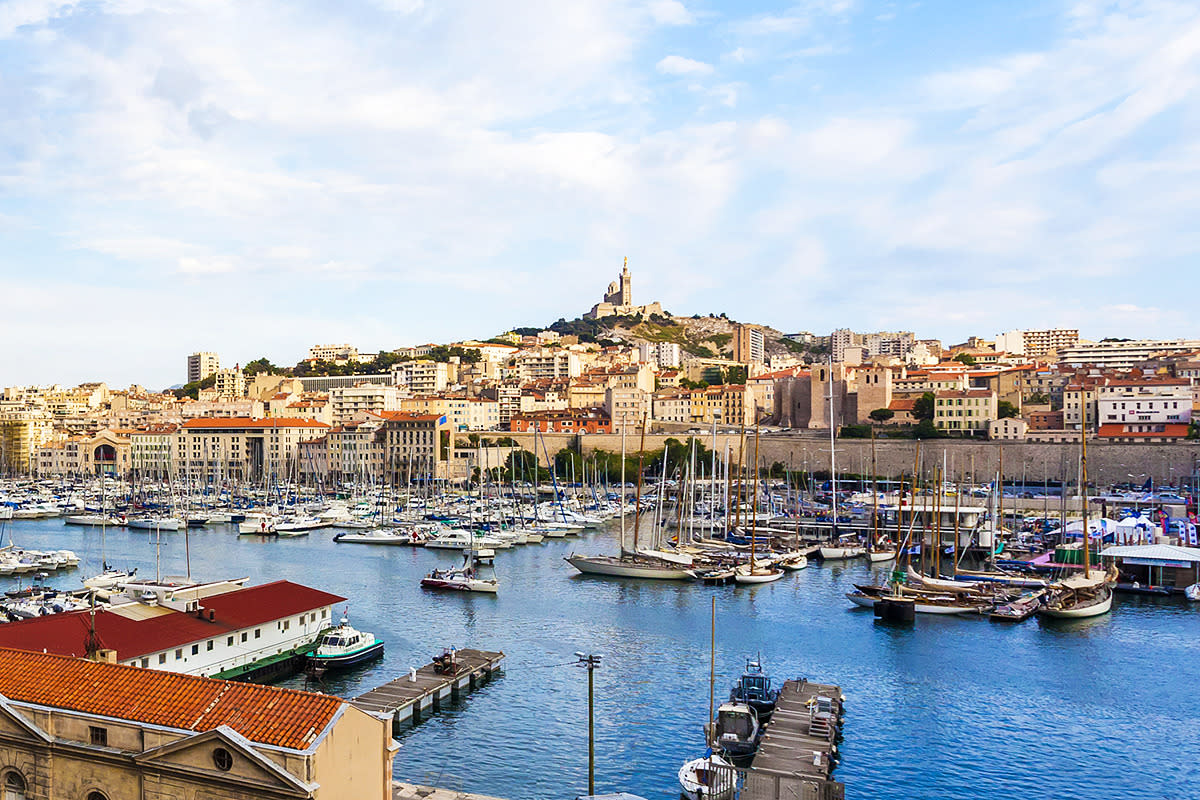
At the heart of France’s “hidden” Riviera is the charming coastal city of Marseille. (Photo: Getty Images)
Writer Peter Mayle became the envy of Francophiles everywhere when his book, A Year in Provence, was published in 1989. The bestseller documented Mayle’s year living in an old farmhouse in a small French village. Over the years, his subsequent tomes — from Toujours Provence to Hotel Pastis — documented life in Provence, establishing Mayle as an expert on the region. His latest novel, The Diamond Caper, takes readers to the South of France in a plot-twisting mystery set against a rosé-fueled Riviera backdrop. Yahoo Travel asked Mayle to write about the places that inspired him.
Until the late 18th century, what we now call the Riviera was definitely not one of the most glamorous regions of France. It was remote, poor, and rocky, with a local economy that depended on fishing, olives, and flowers for the perfume industry. Not a place, you would think, to feature in travel guides. Except for one — Travels Through France and Italy, written by Tobias Smollet in 1765.
He certainly wouldn’t recognize the place today. From Saint-Tropez to Menton, the coast is lined with grand hotels and Michelin-starred restaurants. And, of course, beaches. Some of these are more pebbles than sand; all of them are covered during the season with the human barbecue of bodies slowly turning and grilling in the sun.
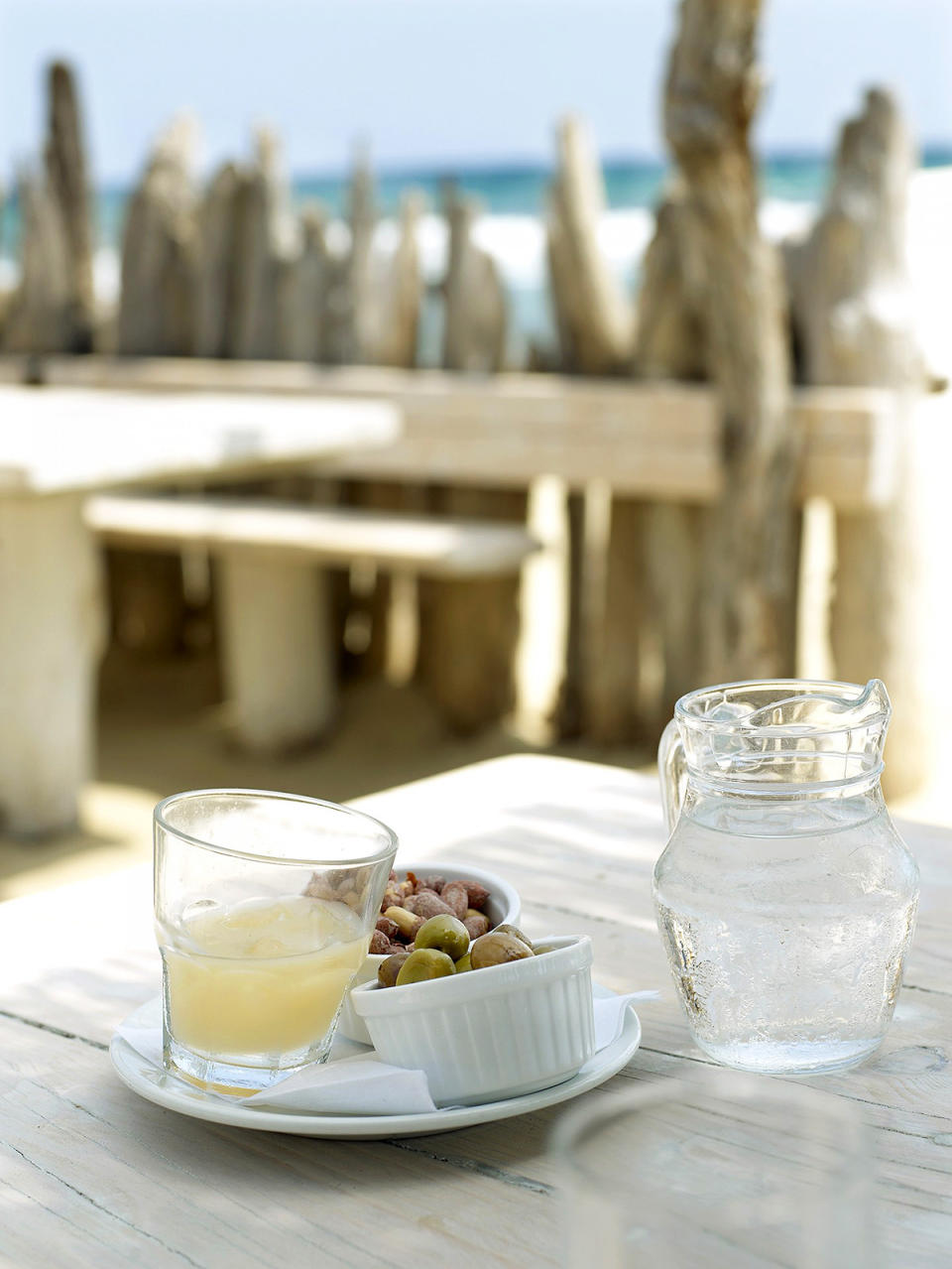
Le Club 55 is the perfect spot for an afternoon bite, a cocktail, and some top-notch people-watching. (Photo: Amiel/photocuisine/Corbis)
But even sun-worshippers must eat, and you can rely on the French to make sure you’re never far from food. My favorite among the string of beach restaurants along the coast is Le Club 55 at Ramatuelle, not far from Saint-Tropez. It’s so close to the sea that you eat with your toes almost in the water. The food is simple and good, and the dress code extremely relaxed. Bikinis welcome.
After you’ve had lunch at Club 55 and spent what’s left of the afternoon on the beach, it’s worth getting dressed and sampling another side of the Riviera. This gives you the choice of countless cafés, bars, and restaurants, and, naturally, the casino at Monte Carlo. For a less risky distraction, you might enjoy taking a good look at the Riviera people, best observed from a café terrace with a glass of rosé to sustain you. There they are passing by, the beau monde of summer, deeply bronzed, desperately chic, walking advertisements for the good life à la Française.
Related: Ooh La La! The 10 Most Beautiful Views of France
It’s not surprising that this version of the Riviera has received worldwide publicity for many years. There is, however, another Riviera, just along the coast. It’s smaller, simpler, and less obviously fashionable. I think this is why I like it so much.
It’s based in Marseille. Founded more than 2,600 years ago, this is France’s second city, and a place well worth an extended visit. For language students, the ladies of the fish market are celebrated for their colorful, often ripe, vocabulary. One of them was once overheard describing sharks as “Marseille sardines,” a good example of the Marseillais love of exaggeration.
What to See
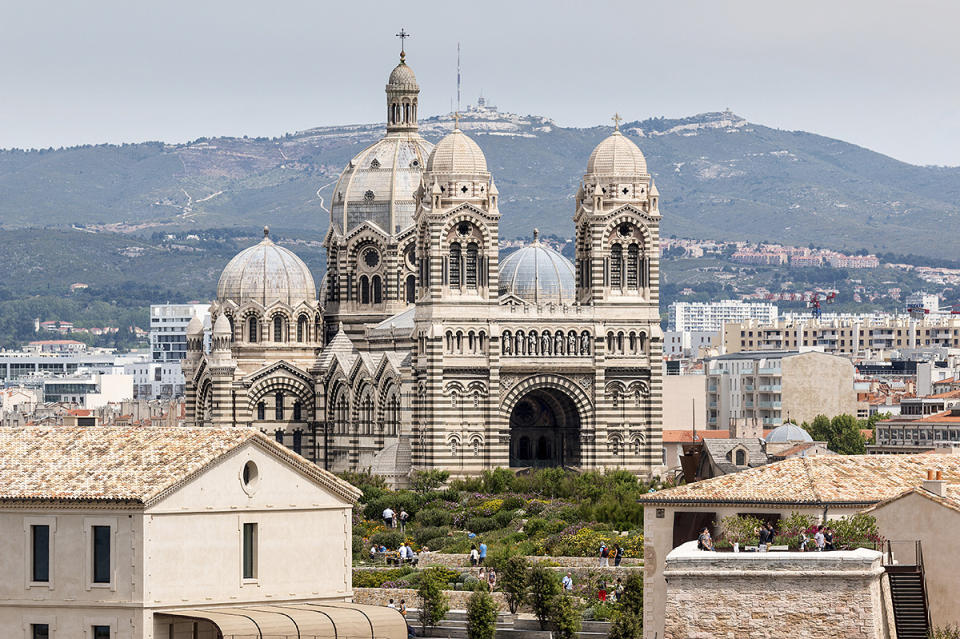
With its striking architecture and incredible history, Notre-Dame de la Garde is a must-see. (Photo: iStock)
History is everywhere you look, from the 18th century Vieille Charité, perhaps the most elegant poorhouse ever built, to Notre-Dame de la Garde overlooking the city, one of the very few places of worship that is also a fascinating art gallery. Then there is the Palais du Pharo, built by Napoleon III as a gift for his wife, museums, crypts, and catacombs galore, and Le Panier, the oldest district in town, where you can easily imagine yourself back in the 17th century.
Where to Eat
With the appetite sharpened by a morning of exploration, where should the hungry explorer go for lunch? After years of most enjoyable research, I can recommend these three favorites:
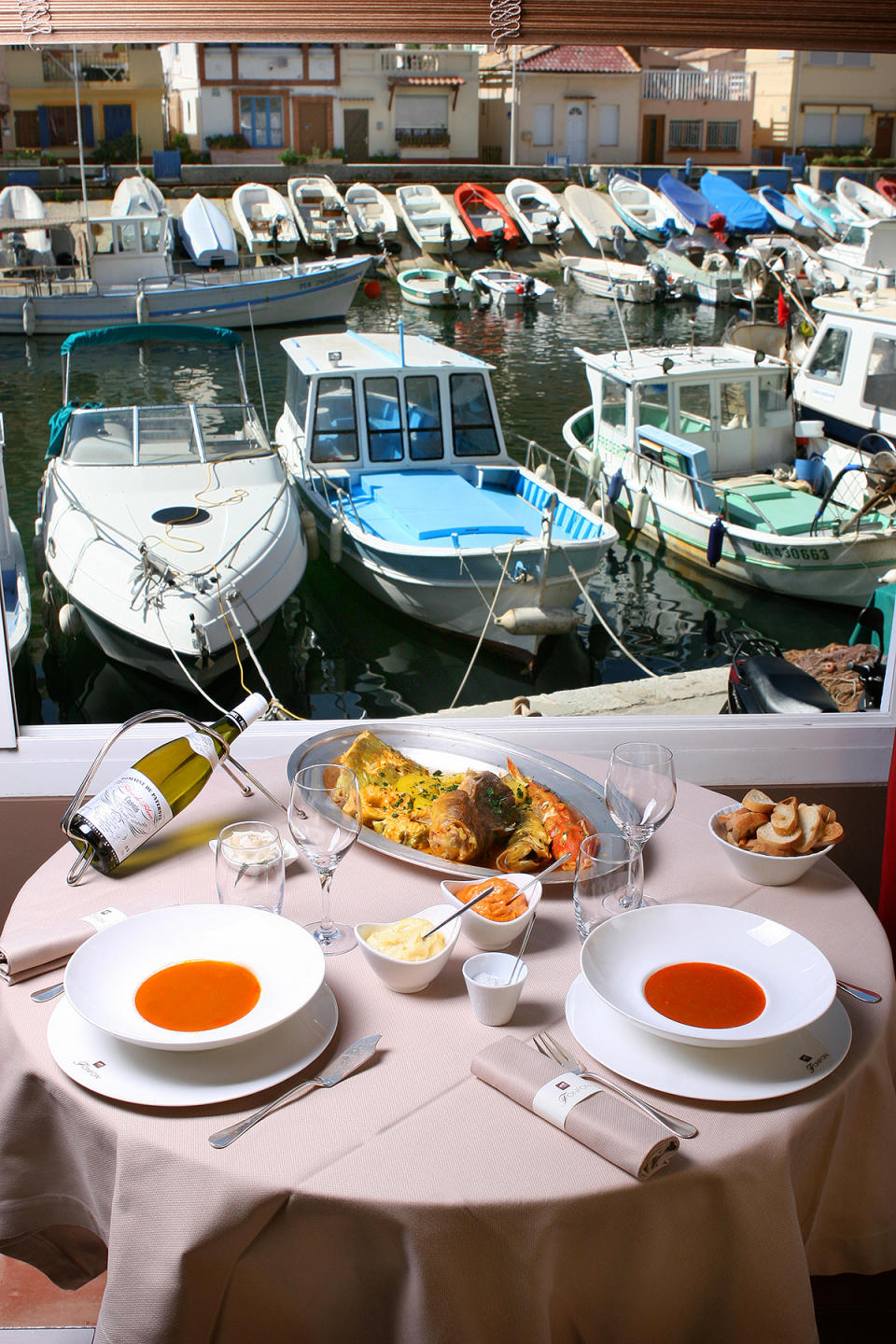
You can enjoy your delicious bouillabaisse while admiring the waterfront views at Fonfon. (Photo: Chez Fonfon)
Chez Fonfon In the 7th arrondissement, Fonfon overlooks a discreet creek tucked well away from the bustle of the main coast road. It is old-fashioned in the best sense: professional service, white tablecloths, and a véritable bouillabaisse — that is, an authentic dish made with ingredients that conform to the strict requirements of the bouillabaisse Charter. (Only in France would a fish stew have its own rules and regulations.)
Related: Armchair Traveler: Great Books Set in France
Le Bistrot d'Edouard Always full, and pleasantly noisy, this is where Marseille’s tapas enthusiasts go to indulge their passion in the 8th arrondissement. In fact, there are a few other dishes on the menu, but tapas are the main attractions — a dozen or more to choose from, with a dessert of peach salad and panna cotta to follow. Delicious.
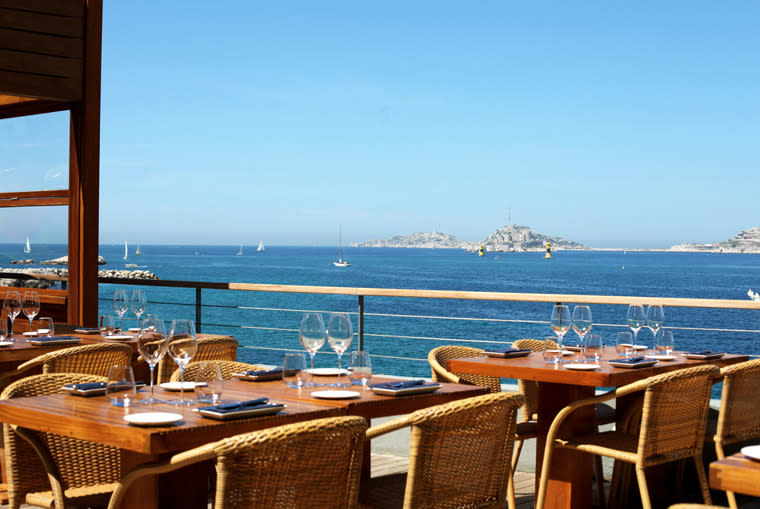
From Peron’s cliffside perch, you’ll be treated to amazing alfresco dining with sweeping vistas and incredibly fresh fish. (Photo: Peron)
Peron This view should be at the top of the menu. From your table high above the Mediterranean on the Corniche Kennedy, you can see the island of If with its prison, where the Count of Monte Cristo spent 14 uncomfortable years before escaping in a body bag. To the west is the long, curved sweep of the coast, and on your plate a handsome fish that only left the sea this morning.
Beyond Marseille
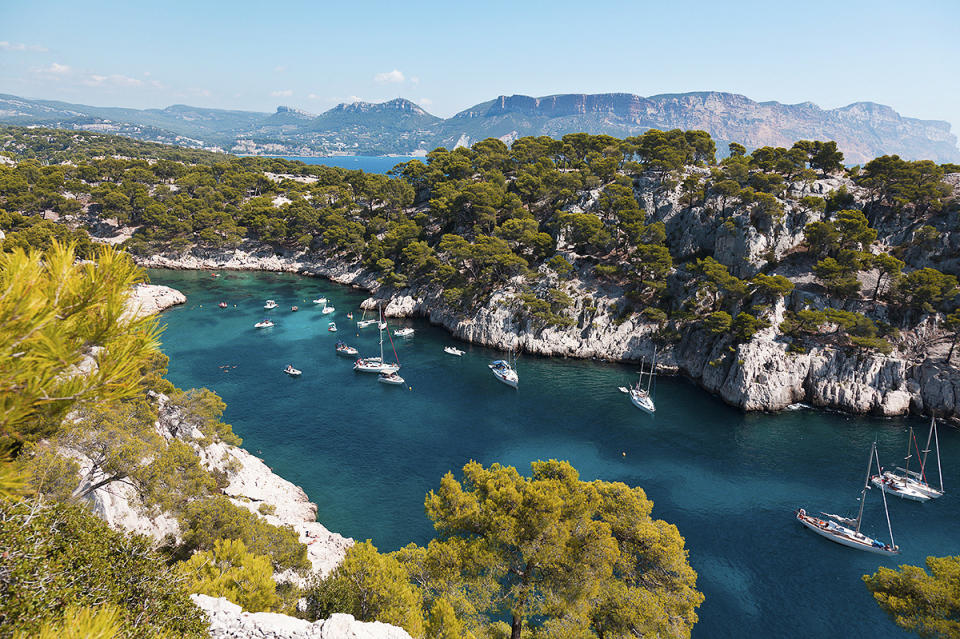
Take a boat ride up the calanques and continue on to Cassis, where you can indulge in the local specialty: white wine. (Photo: iStock)
East of Marseille and best reached by boat are the calanques, a series of wild and beautiful creeks, surrounded by equally beautiful countryside that you can only reach inland on foot because, as a wonderful change from most lovely spots in the world, cars here are forbidden.
Related: The Places in France Every Woman Should Go (Now!)
Serious walkers can carry on from the calanques to Cassis, famous in Provence for its white cliffs, beaches, and a most elegant white wine. The locals will tell you how it became so elegant: it was the day God came down to Cassis and saw a family doing their best with their rocky and unpromising soil. Taking pity on them, God shed a tear that fell on a vine, and the vine, thus inspired, went on to produce Cassis blanc.
And there you have a very brief introduction to the Marseille Riviera. There is more to discover, much more, and I’m sure you’ll have a great time discovering it. Bon voyage!
Copyright Escargot Productions Ltd 2015
Let Yahoo Travel inspire you every day. Hang out with us on Facebook, Twitter, Instagram, and Pinterest. Check out our original adventure travel series A Broad Abroad.

